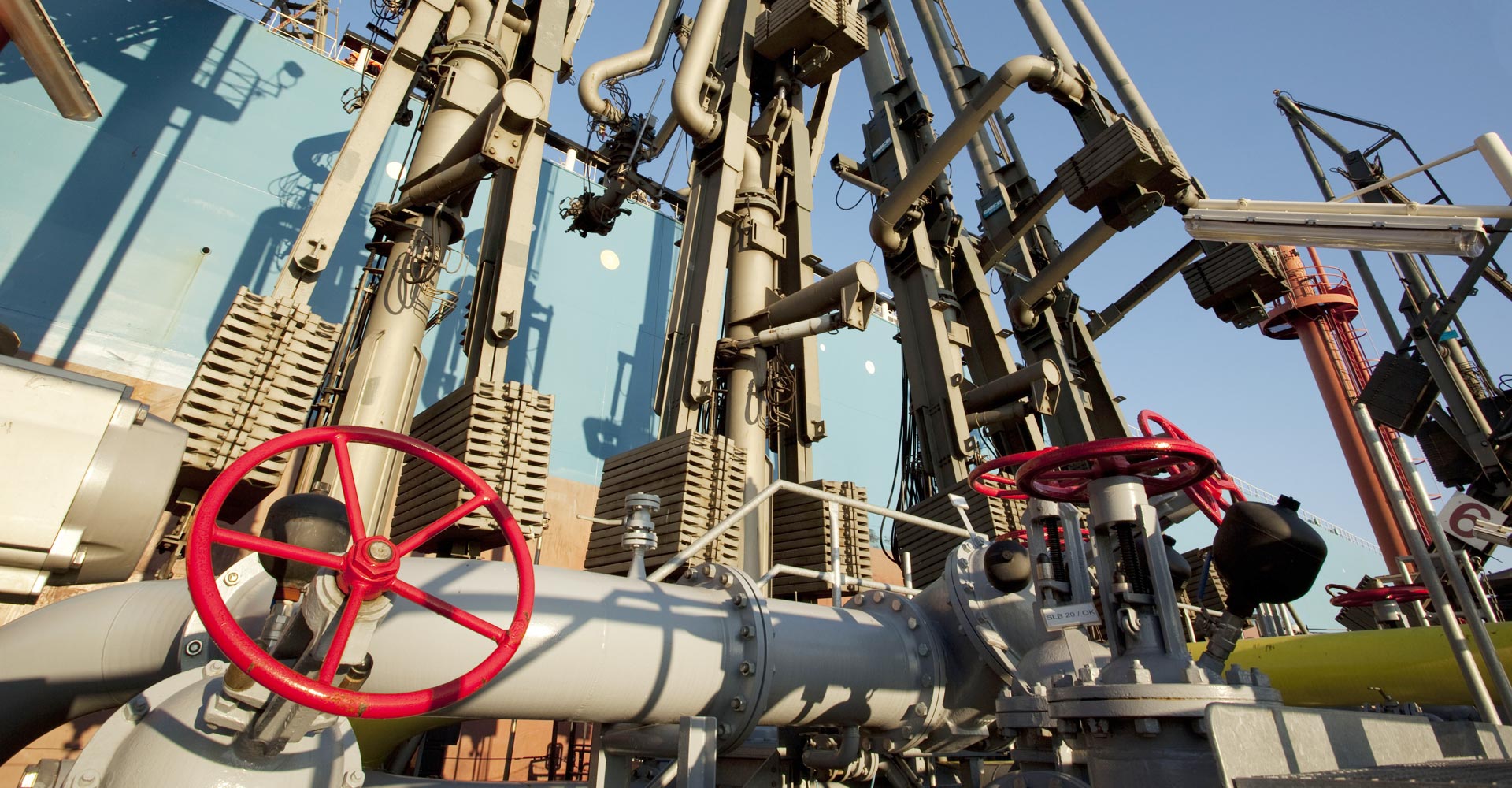Heavy Fuel Oil (HFO)
The generic term heavy fuel oil (HFO) describes fuels used to generate motion and/or fuels to generate heat that have a particularly high viscosity and density. In the MARPOL Marine Convention of 1973, heavy fuel oil is defined either by a density of greater than 900 kg/m³ at 15°C or a kinematic viscosity of more than 180 mm²/s at 50°C. Heavy fuel oils have large percentages of heavy molecules such as long-chain hydrocarbons and aromatics with long-branched side chains. They are black in color.
Heavy fuel oils are mainly used as marine fuel, and HFO is the most widely used marine fuel at this time; virtually all medium and low-speed marine diesel engines are designed for heavy fuel oil. But older steam locomotives and oil-fired power plants also generate energy from heavy fuel oils.
Heavy fuel oil is a residual fuel incurred during the distillation of crude oil. The quality of the residual fuel depends on the quality of the crude oil used in the refinery. To achieve various specifications and quality levels, these residual fuels are blended with lighter fuels such as marine gasoil or marine diesel oil. The resulting blends are also referred to as intermediate fuel oils (IFO) or marine diesel oil. They are classified and named according to their viscosity. The most commonly used types are IFO 180 and IFO 380, with viscosities of 180 mm²/s and 380 mm²/s, respectively. If there is a predominance of heavy fuel oil in a blend, it is assigned to the heavy fuel oil category. As these are blends of heavy fuel oil and lighter fuels, they can also be referred to as a heavy marine diesel oil. Heavy fuel oil cannot generally be pumped at a temperature of 20°C, and must therefore be preheated in the ship's tanks. To ensure the fuel is or remains pumpable, it must be heated to at least 40°C. At a temperature of 15°C, IFO has a bitumen-like consistency.
The ISO 8217 international standard divides marine fuels into distillate fuels and residual fuels. The latter are collectively called heavy fuel oils. An exception is the lowest viscous quality level, RMA 10, which is no longer referred to as an HFO, as its proportion of heavy fuel oil is so small. ISO 8217 stipulates that residual fuels, and therefore all heavy fuel oils, may not contain old oil or lubricating oils.
A key differentiator of heavy fuel oils is their sulfur content. According to ISO 8217, their maximum sulfur content must not exceed 3.5%. The following main classes with regard to the sulfur content can be distinguished:
| Marine fuel | Max. sulfur content |
|---|---|
| High sulfur fuel oil (HSFO) | 3,5% |
| Low sulfur fuel oil (LSFO) | 1,0% |
| Ultra low sulfur fuel oil (ULSFO) | 0,1% |
Low sulfur fuel oil (LSFO)
Heavy fuel oils are referred to as low sulfur fuel oil (LSFO) if their sulfur content is below 1%. Usually these are marine fuel types IFO 180 or IFO 380, which have been desulfurized. Until the end of 2014, ships could still travel through Emission Control Areas (ECAs) with this type of marine fuel.
Ultra-low sulfur fuel oil (ULSFO)
Since January 1, 2015, in accordance with Annex VI of the MARPOL Conventions, ship emissions must contain no more than 0.1% sulfur in such protected areas (ECAs). Due to these tightened restrictions, LSFOs no longer play an appreciable role in these areas and have been virtually replaced with the ultra-low sulfur fuel oil (ULSFO) marine fuel, which complies with those limits. Theoretically, heavily desulfurized IFO fuels could also be used here, but in practice the desulfurization of such heavy fuel oils is too expensive to make economic sense. For this reason, today the term ultra-low sulfur fuel oil usually refers not to desulfurized heavy fuel oils, but to marine gasoil, which is already low in sulfur. It is composed exclusively of distillates and has a sulfur content of under 0.1%. This marine fuel is also known as ultra-low marine gasoil. ULSFO is used in medium- to high-speed diesel engines. When converting from LSFO to ULSFO, it must be ensured that the engine technology is compatible with ULSFO.
High-sulfur fuel oil (HSFO)
The alternative to using marine fuels with such low sulfur content in ECAs is the use of scrubbers. This technology involves injecting water into the exhaust stream to reduce sulfur and other emissions. However, refitting a ship with this technology costs several million euros and means that the ship is docked for a period of time, which leads to a loss in revenue and income for the shipowners. On the other hand, a scrubber allows higher-sulfur marine fuels to be used. In this context, such heavy fuel oils are designated as high-sulfur fuel oils (HSFO), which have a maximum sulfur content of 3.5% as permitted under ISO 8217.
More information about global maritime regulations and the setting of emission limits can be found in the article on Marine Fuels (Bunker Fuels).
Oiltanking and its tank terminals provide comprehensive logistics solutions for the storage and handling of petroleum products, chemicals, gases and other products.
Status: December 2015
All information subject to change. Errors and omissions excepted.

